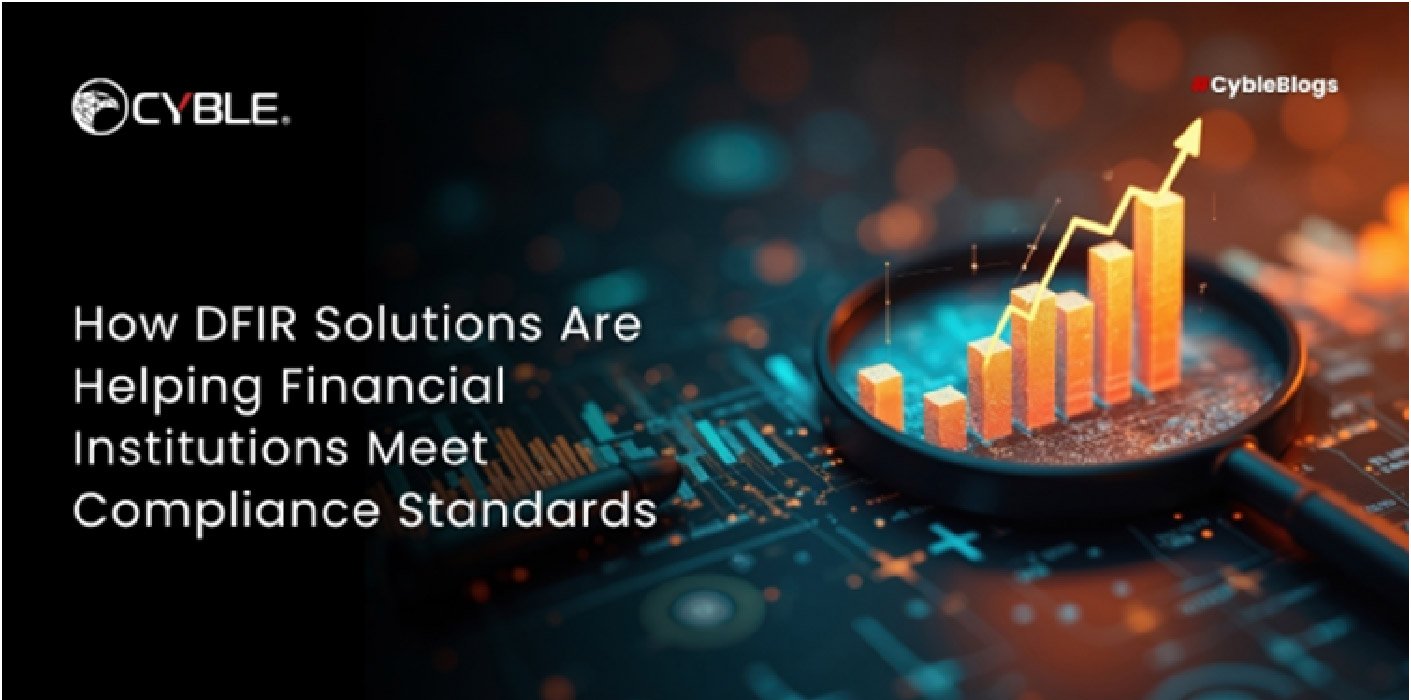Finance
How DFIR Solutions Are Helping Financial Institutions Meet Compliance Standards

Digital Forensics and Incident Response (DFIR) is a practice or investigation of cyber threats and is a crucial part of the cybersecurity domain. There are various DFIR solutions for financial institutions, hospitals, organizations, and cybercrime departments that help in the investigation process during, before, or after an incident involving IT technologies.
To break it down further, DFIR involves the process of collecting and analyzing digital evidence. This evidence is further used to understand how the incident happened and what data and technologies were used. The next phases include containing the incident and recovering crucial data from the incident. However, both digital forensics and incident response are two separate processes that are combined to get accurate results.
Here’s a more detailed breakdown:
Digital Forensics: In this process, experts use methodical collection, preservation, and analysis of digital evidence. This is done to reconstruct the events of a security incident. While there is no limit to what can be used as evidence, in digital forensics, mainly, malware files, log data, and deleted files are used as evidence. This evidence is further investigated to identify the nature of the attack or the response.
Incident Response: In this particular case, the processes change from collection to coordination. Unlike digital forensics which uses an investigation approach, incident response revolves around the actions taken to stop the cyberattack or contain the spread to other systems or files. In most cases, the first line of defense during an incident response action is isolating the infected systems, followed by the removal of malware and restoring data.
Key Compliance Advantages of DFIR Tools
- NIST explains chain-of-custody documentation as a tracking evidence lifecycle. It includes who handled what, when, and why.
- DFIR tools provide granular forensic reporting. This enables forensic teams to find out who initiated the attack, what kind of data was affected, and if any systems were breached. It also helps in identifying the escalation process of the attack and what security measures can be implemented to prevent future incidents.
- Timely DFIR allows financial institutions to contain breaches swiftly, safeguarding uptime, reputations, and regulatory standing.
- DFIR investigations regularly uncover shadow IT, stale data, and orphaned repositories. These insights improve data classification, retention policies, and alignment with compliance mandates, particularly under GLBA, GDPR, and HIPAA.
- Well-preserved evidence (disk images, memory images, application logs) supports financial institutions during regulatory audits, insurance claims, or legal proceedings.
The DFIR Lifecycle in a Banking Context
DFIR follows a structured process aligned with industry best practices:
- Preparation: Incident response plans, created in collaboration with SOC teams, CISOs, legal, and compliance, set protocols for a wide range of cyber incidents.
- Detection & Analysis: Memory and disk images, logs, system artifacts, malware samples, and network traffic are collected to reconstruct timelines and identify “patient zero.”
- Containment, Eradication & Recovery: Systems are isolated; compromised elements removed, vulnerabilities patched, and systems restored, all recorded to support regulatory reviews and audits.
- Post-Incident Review: Lessons learned are incorporated into updated policies and procedures. Evidence retention ensures future audit readiness.
Tools and Expertise Required
Effective DFIR solutions for financial institutions depend on:
- Tier-III DFIR talent within SOCs or from external consultants.
- Specialized toolkits: forensic software (for disk/memory imaging), malware analysis platforms, packet analyzers, and EDR/XDR integrations.
- Interdisciplinary skills: file system forensics, memory forensics, network forensics, malware reverse engineering, log analytics, coding/scripting, legal coordination, and clear communication.
For many smaller financial entities, partnering with third-party DFIR providers ensures compliance while closing internal resource gaps.
Addressing Advanced Threats & Compliance
Modern-day cyber threats, such as ransomware, insider breaches, and APTs, require more than perimeter protections.
- Traces attacker movement through systems
- Identifies malware behaviors
- Determines data exfiltration paths
These insights are essential for compliance reporting, especially when regulators demand detailed breach narratives and proactive prevention strategies.
Embedding DFIR in Data Governance
DFIR extends beyond incident management into everyday data governance:
- Creation & Use: Detecting policy misuse in real time.
- Storage: Highlighting insecure storage during investigations.
- Archive & Disposal: Identifying improper data deletion or retention.
Integration ensures data remains not just managed, but also legally defensible, achieving full cycle protection.
Conclusion
In modern technologies, endpoint security services, and DFIR tools for financial compliance have become essential rather than optional. They provide the forensic traceability needed for legal defensibility, enable rapid and well-documented incident recovery, and support informed data governance by uncovering and addressing security gaps. compliance maturity .
By ensuring readiness for regulations such as GLBA, PCI DSS, and GDPR, DFIR empowers financial institutions to strengthen both their cybersecurity posture and compliance maturity, paving the way for secure, resilient, and audit-ready operations especially when partnered with trusted platforms like Linkhouse for secure digital strategies.
Cyble, a leader in crisis management and cybersecurity, offers DFIR services designed to help organizations proactively detect threats, manage breaches, and recover swiftly from incidents. With tailored solutions that ensure compliance with regulations such as GLBA, PCI DSS, and GDPR, Cyble empowers financial institutions to enhance their Endpoint Security, cybersecurity posture, and compliance maturity — including protection against threats originating from the dark web.
For More Information Visit Coopermagazine
-

 Celebrity1 year ago
Celebrity1 year agoWho Is Jennifer Rauchet?: All You Need To Know About Pete Hegseth’s Wife
-

 Celebrity1 year ago
Celebrity1 year agoWho Is Mindy Jennings?: All You Need To Know About Ken Jennings Wife
-

 Celebrity1 year ago
Celebrity1 year agoWho Is Enrica Cenzatti?: The Untold Story of Andrea Bocelli’s Ex-Wife
-

 Celebrity1 year ago
Celebrity1 year agoWho Is Klarissa Munz: The Untold Story of Freddie Highmore’s Wife
















